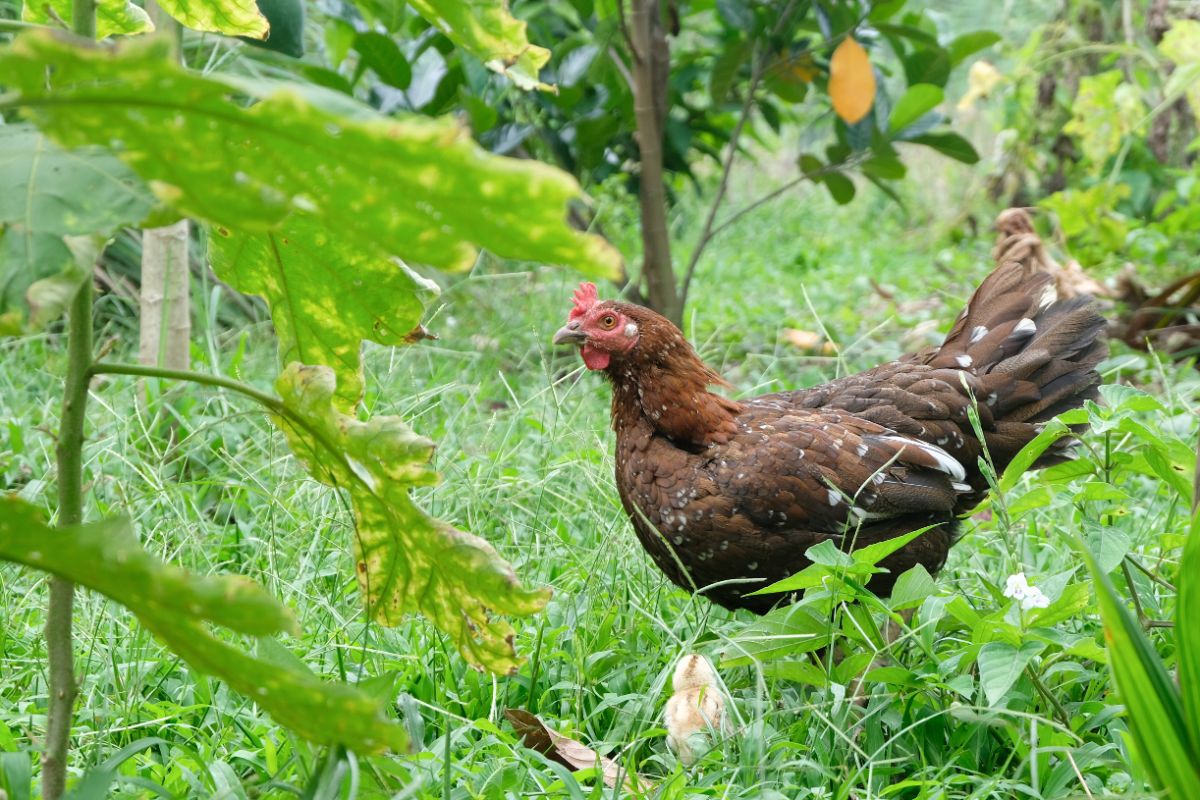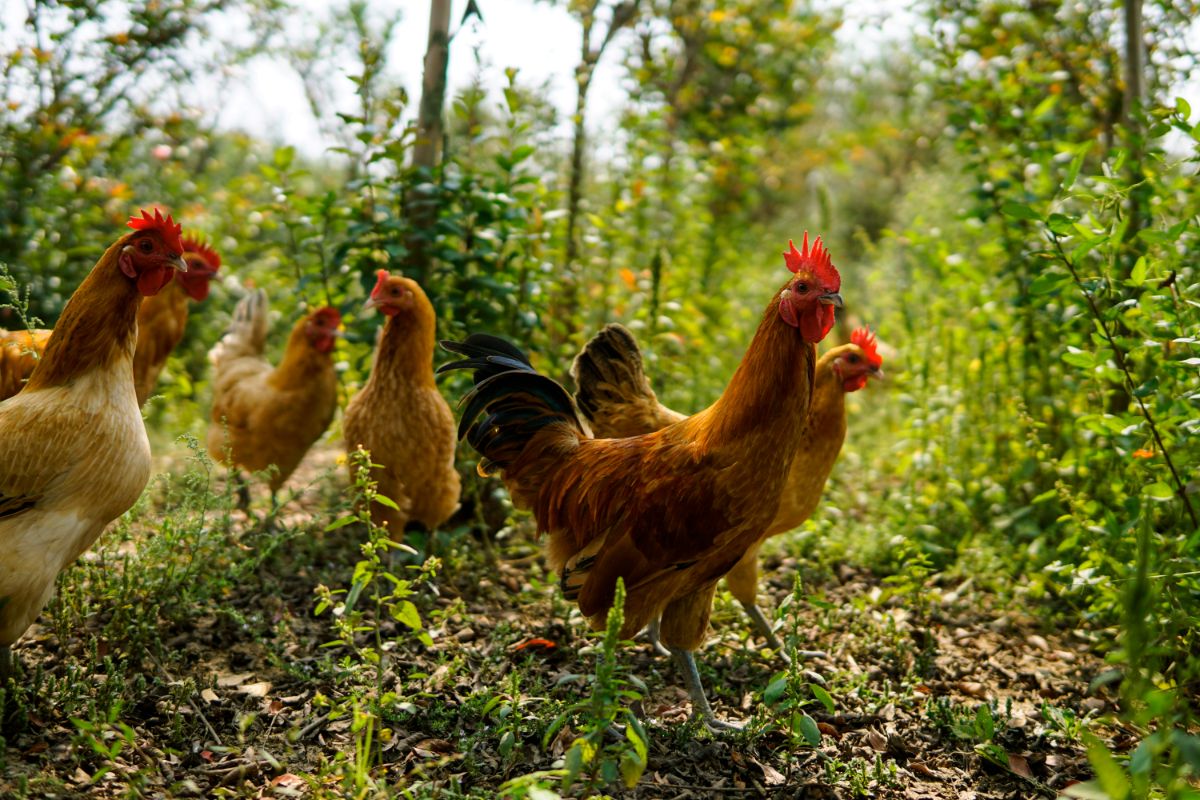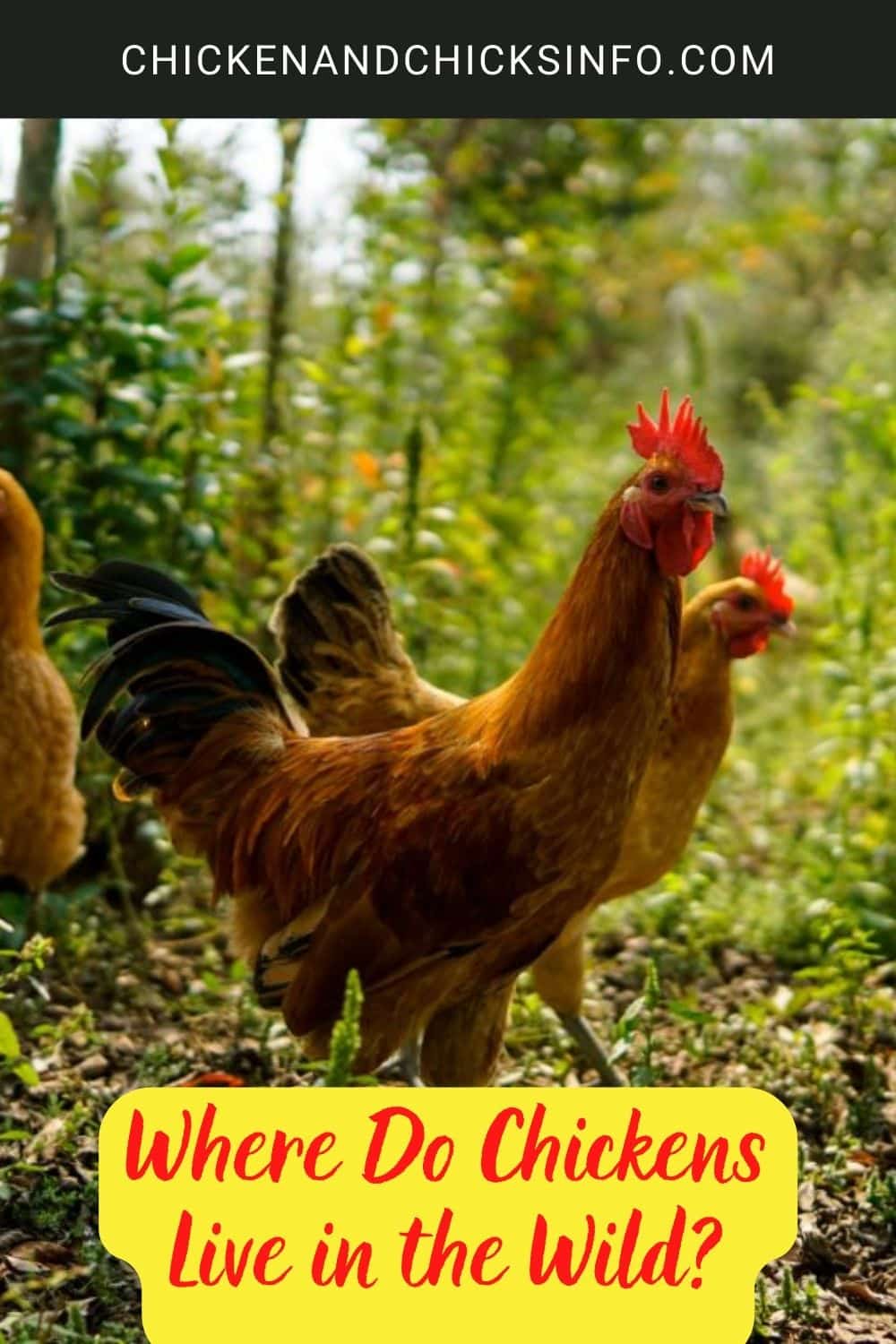
Wondering, where do chickens live in the wild? Or, how to wild chickens survive? Would a domestic chicken survive if put in the wild?
I can help answer these questions and more, please read on.
Jump to:
Where Do Chickens Come From in the Wild?
If you’re asking where wild chickens originated from, there’s a lot of interesting research on this topic.
In a nutshell, it’s believed that chickens originated in Southeast Asia around 10,000 years ago. I find this interesting because there are still lots of wild chickens roaming around parts of Asia today.
Another area that’s known for having a huge population of wild chickens is Hawaii. There are some huge flocks on the island of Kauai, to name one spot. They also live on other remote islands such as Bermuda as they provide ideal places for chickens to thrive as there are fewer predators.
There are actually some huge flocks (or broods as they’re also called) of wild chickens across the U.S. I’ve spoken with or read articles from people who live in parts of California, Texas, Louisana, and Florida that say there are plenty of wild chickens roaming if you look hard enough.
Can Chickens Live in the Wild?

Yes, chickens can live in the wild.
When talking about pets that also live in the wild, there are typically two classifications;
- Domestic animals that go “stray” and live in the wild, and
- Feral animals that live in the wild
The words “stray” and “feral” are often used interchangeably, but there is a difference between the two.
A stray animal, like a stray cat, will have lived with humans and been domesticated at some time. This means, they became used to being looked after and haven’t had to fend for themselves - so they’ll find it difficult if sent into the wild.
A feral animal is an animal that has always lived in the wild. They will typically be skeptical, if not aggressive to humans. They’re living in the wild because they’ve adapted to doing so and don’t need any help.
All animals handle being in the wild differently. Some are better equipped than others to survive, and chickens are pretty good at surviving in the wild. If there is a source of food and water in some form, chickens will likely find it.
There are packs and colonies of wild chickens happily living in the wild in certain areas as I’ve already explained. Domestic chickens will be a lot more vulnerable to predators and such. But would be good at foraging and finding food.
What Are Feral Chickens?
Feral chickens are chickens derived from domestic chickens (Gallus gallus domesticus) and are similar in many ways. They are called feral as they have returned to the wild and are able to look after themselves without human aid.
The Red Junglefowl is one of the most common feral chickens. This breed of chicken was first domesticated more than 5,000 years ago in India. Also known as jungle fowl, they have a distinctive look and is the chicken that is commonly portrayed on TV and in illustrations.
They are omnivorous, meaning they feed on seeds, fruits, and insects. And, it’ll come as no surprise that they are good at avoiding predators. Usually fleeing to a high up place like tree branches to stay safe overnight.
What Happens to Chicken Eggs in the Wild?

If you’re wondering what happens to the eggs wild chickens lay, there are four main possibilities;
- The hen is able to look after their eggs and chicks hatch, adding to the population of wild chickens
- Predators that feed on eggs find and eat them
- The hen abandons or eats the egg themselves
- Humans come along and take the eggs
How Long Do Chickens Live in Captivity?
As with any pets, the answer to this question depends on a number of factors. Such as the breed of the chicken, the general conditions they live in, and the standard of care they receive.
To give you a general idea, however, the average backyard hen living in decent conditions will live 8-10 years.
Don’t despair if your chooks are entering their “twilight” years though. It’s not unheard of for a chicken to live up to the ripe old age of 20!
In Summary - Where Do Chickens Live in the Wild?
Domesticated chickens we know well today came from their wild ancestors. Those same chickens, the Red Junglefowl still roams freely in parts of the world like Asia and some smaller islands.
There are also flocks of wild chickens hiding it in several states across the U.S. in bug numbers in Hawaii, and some other spots around the globe.
You shouldn’t try and release domesticated chickens into the wild. There are too many predators and chicks that have been pampered and cared for by humans are too vulnerable to be let loose wild.
Chickens are obviously very good at foraging for food and surviving if there isn’t a serious threat from predators, however. This is how some flocks are believed to have started in the wild.
Apparently, it was hurricanes and other extreme weather conditions that first let chickens loose in Hawaii. With the lack of predators hunting them, they were able to breed and grow in numbers.





